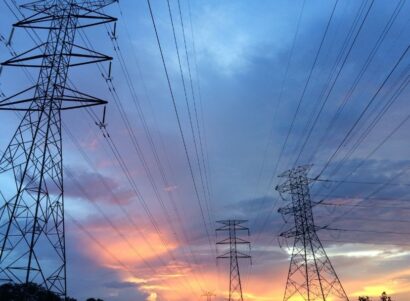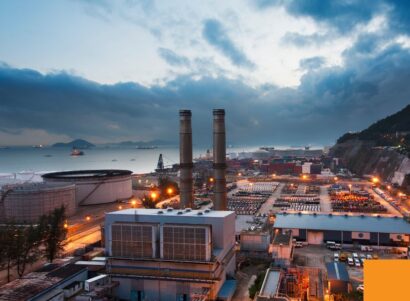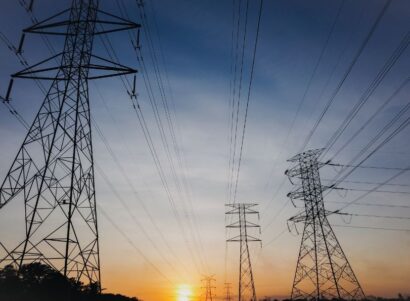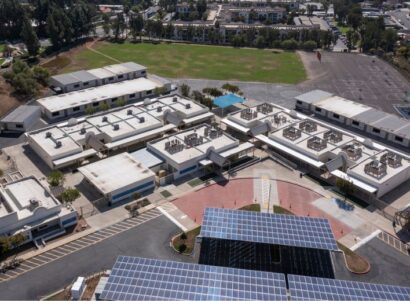Background
In recent years, state and local officials across California have outlined plans for green hydrogen to help achieve ambitious greenhouse gas reduction targets. These plans frequently diverge, and include a wide range of targets for green hydrogen deployment, with different primary end-uses, timelines, and definitions of what makes hydrogen “green” or “clean.”
In this report, we review existing plans for green hydrogen adoption to support California’s climate goals, and discuss potential adverse consequences associated with its proposed deployment. Where there is insufficient information, we outline the key questions that must be addressed to better understand the impacts of these proposals. Our analysis was guided by two core questions:
- What are the direct impacts of hydrogen adoption across multiple applications (for example, what are the potential public health hazards of using hydrogen compared to existing fossil fuel use or other clean alternatives?);
- What are the indirect and system-level impacts of proposed hydrogen strategies (for example, how does proposed hydrogen adoption change the required rate of renewable energy deployment in the next twenty years?).
Key Findings
Our review finds that the existing plans for deploying green hydrogen in California often lack detail, but when these details are provided the plans rarely align. Indeed, misalignment exists across all aspects of California’s proposed green hydrogen system—from where and how hydrogen will be produced, to how it will be transported and used. In many cases, plans also lack sufficient detail to fully analyze the potential impacts, whether positive or negative, of the numerous hydrogen deployment strategies being proposed.
Despite the many uncertainties embedded within California’s current green hydrogen proposals, our findings suggest that the adoption of green hydrogen—and its role in California’s economy-wide energy transition—will hold significant implications for climate change, public health, equity, safety, cost, the environment, and the overall feasibility and speed of achieving the State’s climate goals.
Given this, we find that the enactment of conflicting plans raises the risk of energy security and reliability challenges if there are numerous local and state planners relying on different end uses for a limited hydrogen supply, or who have different expectations for the renewable energy that might be used to produce it. Lack of coordination between plans may also undermine the ability of local and state planners to meet their climate goals, as well as result in inefficient infrastructure investments and potential stranded assets.
Recommendations
Before rapidly expanding hydrogen infrastructure, we recommend that planners and decision-makers better characterize the impacts, both positive and negative, of hydrogen deployment scenarios and alternatives. This assessment will require a more comprehensive analysis of hydrogen production, transport, and use for proposed applications, including resolving the many outstanding unknowns and uncertainties, and may require the development of contingency plans should proposed deployments prove infeasible. We also make the following recommendations:
- Develop stringent, consistent definitions for “green” or “clean” hydrogen to ensure that hydrogen adoption provides verifiable additional climate benefits with minimal environmental impacts.
- Improve interagency coordination on hydrogen planning to ensure competing goals and demands do not lead to system inefficiencies or undermine the State’s ability to meet decarbonization targets.
- Better characterize hydrogen leakage rates and pipeline safety risks before committing to hydrogen infrastructure expansion; ensure sufficient safety measures are built into hydrogen deployment, including ongoing funding for monitoring and maintenance.
- Address equity concerns throughout hydrogen planning processes, including ongoing meaningful community engagement and incorporation of equity considerations when addressing public health and safety concerns.
- Consider the system-level and lifecycle impacts of hydrogen production and use—including potential cost, public health, equity, environmental, and climate implications—within policy planning.
- Evaluate alternative technologies and deployment scenarios and each scenario’s sensitivity to techno-economic assumptions.
- Avoid hydrogen pipeline blending due to minimal potential climate benefit and possible safety risks.
- Fill outstanding research gaps to address unknowns. A primary example includes the need to comprehensively model energy demand to better understand and optimize combined renewable energy requirements in the power sector, for hydrogen production, and to power the direct air capture of carbon dioxide.

 Report
Report
 Press Release
Press Release






